We’ve looked at good backdrops for a livestream in one post (in German language). This guide is about the right streaming lights for events. Here we explain which types of lighting are available and which live streaming setups (semi-)professionals can use.
Table of contents
+
What livestreaming event are you planning and what atmosphere do you want to create with your content? It depends on which types of light and which setting you need to professionally design a livestream lighting.
First of all, there is the natural light that comes in from outside and can be used effectively for livestream setups. However, it’s important to remember that daylight is always changing. To light a setup well, it usually needs additional artificial light. The available space plays an essential role here, because it dictates how the entire setting must be set up.

Scene with artificial light indoors. Photo: Dose Media /Unsplash
Basically, anything is possible: from a cozy, semi-dark and high-contrast evening scene to a daylight interview or tutorial situation that is illuminated down to the last corner.
The subject of lighting is very complex. As a result, there is not always one perfect solution for a setting. Often, different variations are suitable. Until the setup is good enough, streaming lights are moved back and forth, screwed up and down. This is part of the process, especially when you set up a setting for the first time. Of course, the routine comes with each setup and your own experience.
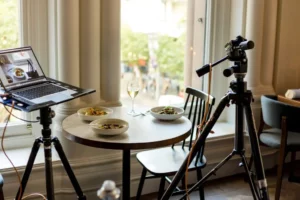
Scene with daylight indoors. Photo: Sander Dalhuisen /Unsplash
As mentioned, daylight coming in through window fronts plays a big role. It is worth using the light to one’s advantage, provided the planned livestream does not take place in the evening hours. Sometimes no additional artificial lights are needed, or only a few, as long as the light coming in from outside remains constant.
For livestreaming setups, there’s one thing you can definitely remember right at the start: The lighting is at least as important as the sound.
Good to know: Facts on the subject
- The luminosity of light is specified in lumens. The unit thus provides information about how brightly a lamp shines.
- The color temperature is measured in Kelvin. It indicates whether the light source is warm white, neutral white or daylight white.
- White balance is necessary to match the color temperature of the camera and the light source.
- CRI: The Color Rendering Index shows how much the color rendering of a light source deviates compared to natural light. The CRI is therefore a quality characteristic and is specified between 0 and 100. A good quality light should have at least more than 80.
Light types—an overview
1. Key Light
The Key Light is the main light source and therefore the most important. It usually shines the brightest and may be sufficient as the only light source for a simple livestream setting. It is positioned behind or slightly diagonally next to the camera. A diffuser can also ensure that the light is evenly distributed throughout the room.
Many professionals use LED streaming lights in combination with a diffuser and/or softboxes. Softboxes are area lights or foldable light tubs. However, softboxes are less suitable for livestreams at home or in small offices because they are large and heavy. They are more likely to be used in professional studio settings.
Products for Key Lights, Diffuser & Softboxes:
- Viltrox LED Key Light
- Neewer Table Top Led Lights
- El Gato Key Light
- Godox LEDP260C LED-Licht
- Lastolite LR3301 HaloCompact Diffusor
- Aputure Light Dome Mini II
- Prolycht Thunder Lite Rectangular Softbox
2. Back Light
For a perfectly illuminated room from behind, livestreaming professionals often use an LED Back Light. This ensures that the scene is well lit from the back. At the same time, it prevents shadows and dark corners in the room. The Back Light also causes the person’s hair and head to have a slight glow, which is why the Back Light is also called a Hair Light.
Be careful, not all shadows have to be removed. A little contrast in the scenery won’t hurt, otherwise the room and the person will look flat and two-dimensional. Unless you’re planning a tutorial or product presentation where you or the subject must be lit to the last detail. There are no limits to creativity.
Recommendations for Back Lights:
3. Fill Light
Complementing the Key Light and Back Light, the Fill Light ensures that every corner—and especially the side opposite the Key Light—is illuminated. As the name implies, it fills remaining dark parts of the room with light, such as the other side of the streamer’s face. The Fill Light is less powerful than the Key Light or is located further away. It therefore reduces the light contrasts. If strong light-dark contrasts are desired or part of the lighting concept, the Fill Light can be dropped.
Fill Light products:
- Godox SL-60W LED-Videolight day light
- EMART 600W Umbrella Lighting Kit
- LS 120d II Fill Light
- Light Dome II Softbox Diffusor
4. Ring Light
Attention, a ring light is not to be confused with a ring flash or Ring Flash. The latter refer to the superstructure form of a flash light that is directly attached to the camera in the form of a ring. The Ring Light, on the other hand, is a very popular product among YouTubers for inexpensively and easily setting up a good lighting setup. It illuminates all the areas that can be seen in front of the Ring Light, which is the setting. You often don’t need any other light sources.
Products for Ring Lights:
What light settings do we have?
Now that we have learned about different types of streaming lights and their special features, let’s take a look at the combination in which these lights can be used.
Three-point lighting: The classic!
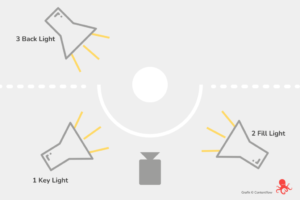
Four light sources for full illumination
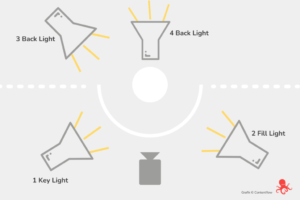
Two light sources, two options

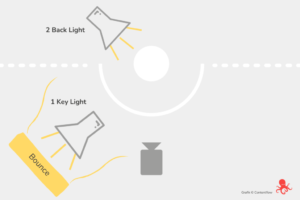
One light source: With Ring Light or Key Light

Accessories: Filters, Reflectors, Diffuser
We have already recommended diffuser products above. But some products also combine different functions—and are available in different colors. Such as:
- Reflectors with diffuser are available here at Fotodiox, here at Teltec or here at Neewer. The color selection of reflectors ranges from transparent, white, silver to gold and black.
- Various filter foils can be purchased here, for example.
- For some livestreams green screens are needed, we already explained that in another article. Various green screen products are available at this link.
The list of accessory products can be continued, but the ones mentioned are the most basic.
Conclusion
Lighting is sometimes also a question of taste. One thing is certain: The right light enhances your livestream and ensures that the content is well received by the audience. There is a wide range of light sources on the market. With a little knowledge and a spirit of experimentation, you can achieve visually good results.
Download tips for free
We have compiled our streaming lights tips in a downloadable file (in German language available):
download for free
Also interesting: Live Streaming Software: Options, pros and cons


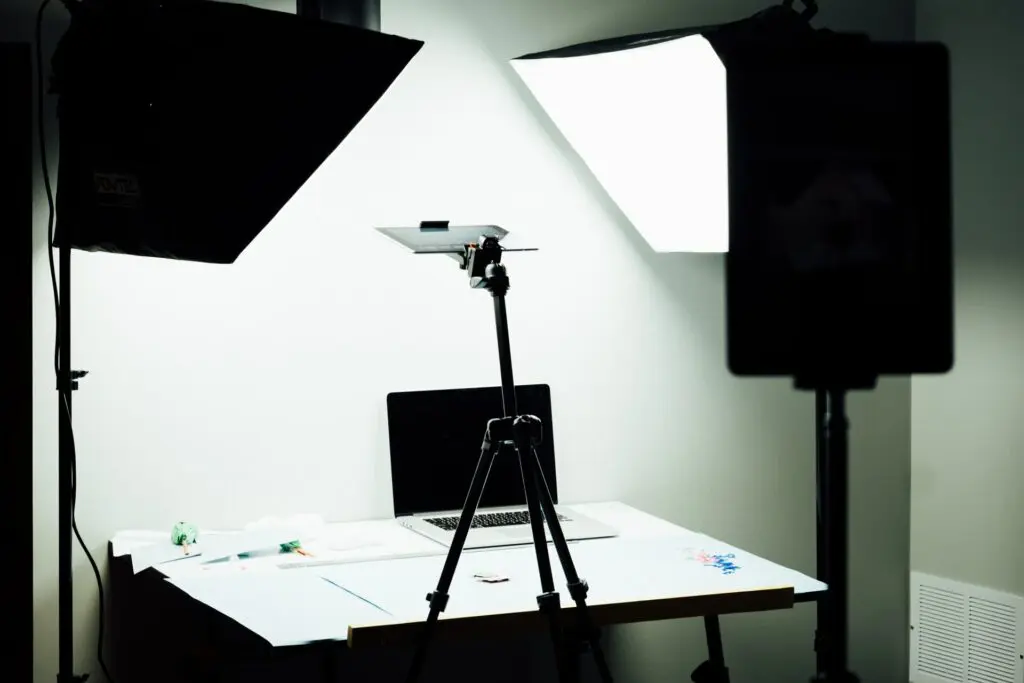


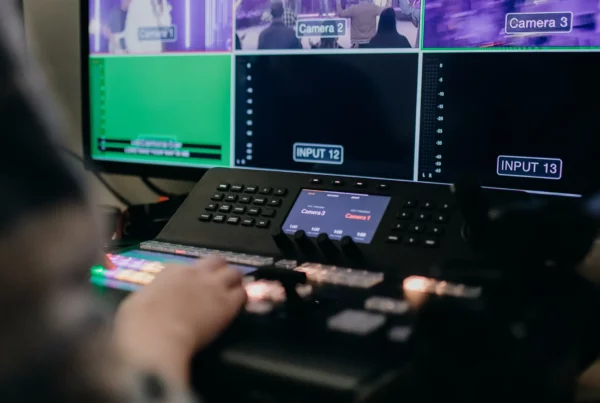
 This project has received funding from the European Union’s Horizon 2020 research and innovation programme under grant agreement No 876239, 959379 & 965502.
This project has received funding from the European Union’s Horizon 2020 research and innovation programme under grant agreement No 876239, 959379 & 965502.
